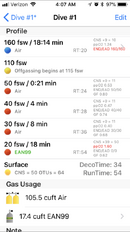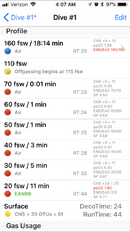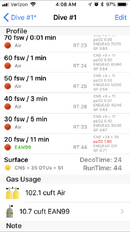Nirvana
Contributor
There's a bunch of published research regards deep stops, micro-emboli considerations etc; much of it referenced and extensively discussed here on Scubaboard.
GF high and low offers divers the capacity to tweak their ascent curve according to their individual preferences and needs.
Mark Powell's 'Deco for Divers' is probably the best starting point for a layperson understanding of gradient factors.
Decent tech instructors will expand on that with supplementary lectures in their classes.
These lectures should link the theory with the practical application; there's a myriad of personal preferences and specific dive parameter needs that dictate how GF may be used to create a desired outcome.
Thanks, but I have already read 'Deco for Divers', as well as other often recommended publications directed to divers.
Regarding 'Deco for Divers', its section on gradient factors is located in chapter 6, titled 'Deep Stops and Bubble Models'. This chapter begins with a historical account of the realisation that even asymptomatic dives produce bubbles and with the gain in popularity of Pyle Stops. The description of the purpose of gradient factors reads as follows:
'Gradient factors on the other hand provide an approach which modifies the specific calculations of the dissolved gas model. They are an attempt to include a method of reducing asymptomatic DCS within the framework of the Bühlmann model. The basic concept behind gradient factors is that if there is a danger of bubbling even if we stay within the M-Value, then to increase safety we can simply stay further away from the M-Value. Gradient Factors are just a way of controlling how close we are prepared to get to the M-Value.'
(Powell, 2012)
As I stated on the OP, the problem is that, according to what I have been able to understand from more recent developments (the NEDU study in particular, whose validity I really DON'T want to discuss on this thread), emphasising deep stops may not reduce bubbling substantially, and the consequent increase in supersaturation of slow and medium tissues that it imposes may make DCS more likely.
The question, then, is, what makes you believe that controlling the supersaturation of faster tissues on the initial phase of ascent is beneficial?
Reference:
Powell, M. (2012). Deco for Divers. Essex: Aquapress, pp. 137-139, 144-145.







